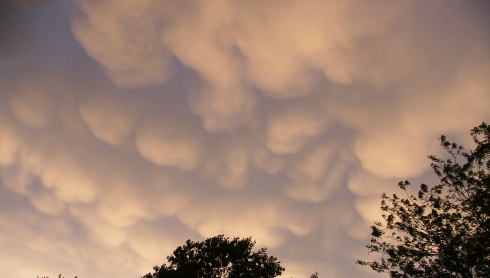

Clouds: Use judgement here. If you can collect enough photons to get a usable spectrum in a reasonable length of time, keep working. If you pause to let a patch of clouds go by, close the telescope cover as cheap insurance against that unexpected rain shower. If you want to augment the cloud forecasting capability of your eyes, check out the satellite imagery at one of the weather bookmarks in Mozilla on Ceres.
Humidity: Unless you are taking time-critical observations, close up if the humidity exceeds 95% as read from the gauge on the platform railing. In critical situations, you may continue to observe if the humidity exceeds this value, but under no conditions should you observe in the presence of fog. The web-accessible gauge typically reads 10-15%, or even more, lower than the gauge on the railing.
Cold: If the dome shutter labors and groans when opened, it will be even more difficult to close later. Use caution.
The temperature standard at low temperatures is the ST-9, which does not need to be cooled if the ambient temperature is below freezing. On this scale, the operating limit is -11 C, the temperature at which the telescope loses its ability to maintain pointing in declination after long slews. If you encounter this problem, you can continue observing to get time-critical observations, but routine observing may cause wear and tear on the system and should not be done.
Snow and ice: If snow is being blown off the dome, do not open. In the dome, inspect the rails on which the dome slot rides as it opens and closes. If they contain snow and ice that appears likely to obstruct the wheels, do not open.
Wind: Normally avoid pointing the telescope into any wind stronger than about 15 mph; try to stay about 90o away. We don't have a wind gauge, so you have to rely on Internet information from nearby weather stations. The flag on UHall (visible from inside the dome if facing west) gives a good indication of the wind direction. If you see particulate matter (snow, dust, pollen) in the air, close. Close if the wind gusts above 40 mph at any of the airports in the area, as reported on a reliable source of weather information, such as the Hourly Weather Roundup on Buckeye Weather (see the web bookmarks on Ceres).
Fireworks and searchlights: Here the concern is particulate matter, not light. Close if the fireworks are upwind.
Lightning visible: Use caution; check Internet radar maps for location of thunderstorm.